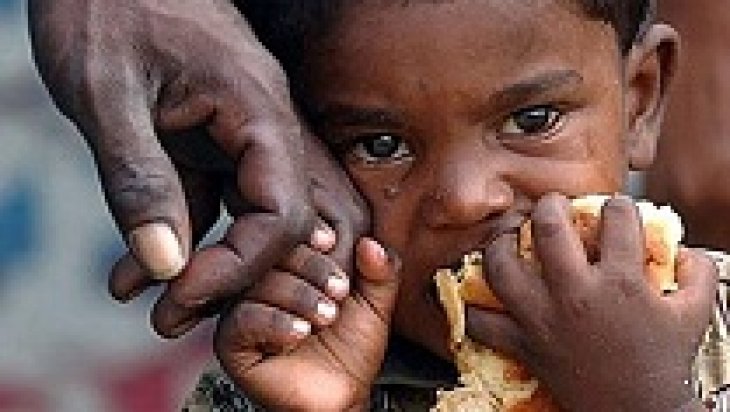15 Years On: Millennium Development Goals and the Middle East

Eight Millennium Development Goals (MDGs) were adopted after the Millennium Summit of the United Nations in 2000. After some 15 years, there are both achievements and failures. In a recent report by the UN, Secretary General, Ban Ki-Moon summarizes as follows: “The global mobilization behind the Millennium Development Goals has produced the most successful anti-poverty movement in history.…..The MDGs helped to lift more than one billion people out of extreme poverty, to make inroads against hunger, to enable more girls to attend school than ever before and to protect our planet…..Yet for all the remarkable gains, I am keenly aware that inequalities persist and that progress has been uneven. The world’s poor remain overwhelmingly concentrated in some parts of the world. In 2011, nearly 60 per cent of the world’s one billion extremely poor people lived in just five countries. Too many women continue to die during pregnancy or from childbirth-related complications. Progress tends to bypass women and those who are lowest on the economic ladder or are disadvantaged because of their age, disability or ethnicity. Disparities between rural and urban areas remain pronounced.”
Before looking more closely to the status of Middle East (which largely corresponds to the UN’s geographical terminology “Western Asia”) vis a vis the MDGs, it is useful to recall these overarching goals:
1. Eradicate Extreme Poverty and Hunger
2. Achieve Universal Primary Education
3. Promote Gender Equality and Empower Woman
4. Reduce Child Mortality
5. Improve Maternal Health
6. Combat HIV/Aids, Malaria and Other Diseases
7. Ensure Environmental Sustainability
8. Develop a Global Partnership for Development.
With respect to Goal 1, Western Asia provides a bleak picture concerning the last five years. Because of violent conflicts in the region, the UN did not anticipate any improvement for 2011-2015 period, although the region achieved the target of halving the proportion of people living in extreme poverty. Besides, Western Asia, together with Northern Africa, is among the worst in youth unemployment statistics. Concerning hunger in Western Asia, the UN reported that “projections indicate that the prevalence of undernourishment will rise by 32 per cent between 1990–1992 and 2014–2016 due to war, civil unrest and a rapidly growing number of refugees”.
Regarding Goal 2, Western Asia suffers greatly from the widespread violence. The UN Report gives Syria as an example: “the ongoing conflict in the Syrian Arab Republic has had a devastating impact on children’s education. Data from the Syrian Ministry of Education indicate that enrollment rates fell by 34 percentage points for grades 1 to 12 in the school year ending in 2013. Refugee children out of Syria are not in a better situation, too: “among Syrian refugee children of primary and lower secondary school age (6 to 14 years) in Lebanon, the enrollment rate is estimated to be around 12 per cent.”
Counterintuitively, Western Asian countries provide an interesting outlook with regard to Goal 3, according to the UN Report: “The largest gender disparities in enrollment ratios are found in tertiary education, with only one developing region, Western Asia, achieving the target.” But, it should be noted that Western Asia has not been able to hitherto achieve gender parity in primary and secondary education.
Goal 4, which is related to child mortality, demonstrates a success in Western Asia. Child mortality (under-five) rate in Wester Asia has dropped by 65% between 1990 and 2015. To be more specific, in 1990 the mortality rate was 65 children out of 1000. Not, it is 23 out of 1000 However, the region still has not caught up with the world average of 19.
As to Goal 5, Western Asian countries are reasonably successful as well. Maternal mortality rate has fallen by 43% between 1990 and 2013, number of births to women aged 15-19 has decreased considerably, and the proportion of deliveries attended by skilled health personnel has reached to 86% (well above world average of 71).
HIV/Aids, malaria and tuberculosis do not seem to be quite big issues in Western Asia, particularly compared with regions like Sub-saharan Africa. The region has the lowest number of new HIV infections in the world. Despite this, due to rampant violence in parts of the region may cause an increase in prevalence of other diseases, such as water-borne diseases.
Proportion of withdrawal of renewable water resources is around 54% in Western Asia. This corresponds to a “water stress”, according to UN. It should be emphasized that the world average is just 9%. Meanwhile, the protected areas in the region have increased more than four times, in the last fourteen years. Also, with respect to the target on the proportion of the population using an improved drinking water source, the figure has reached to 95%, above the target of 2015.
According to the UN Report, despite the recent wave of violent outbreaks in the region, Western Asia as a whole, has become less externally indebted in the last three years (2011-2013). Regarding external aid, United Arab Emirates and Turkey are among the top countries increasing their assistance proportionate to their gross domestic incomes.






